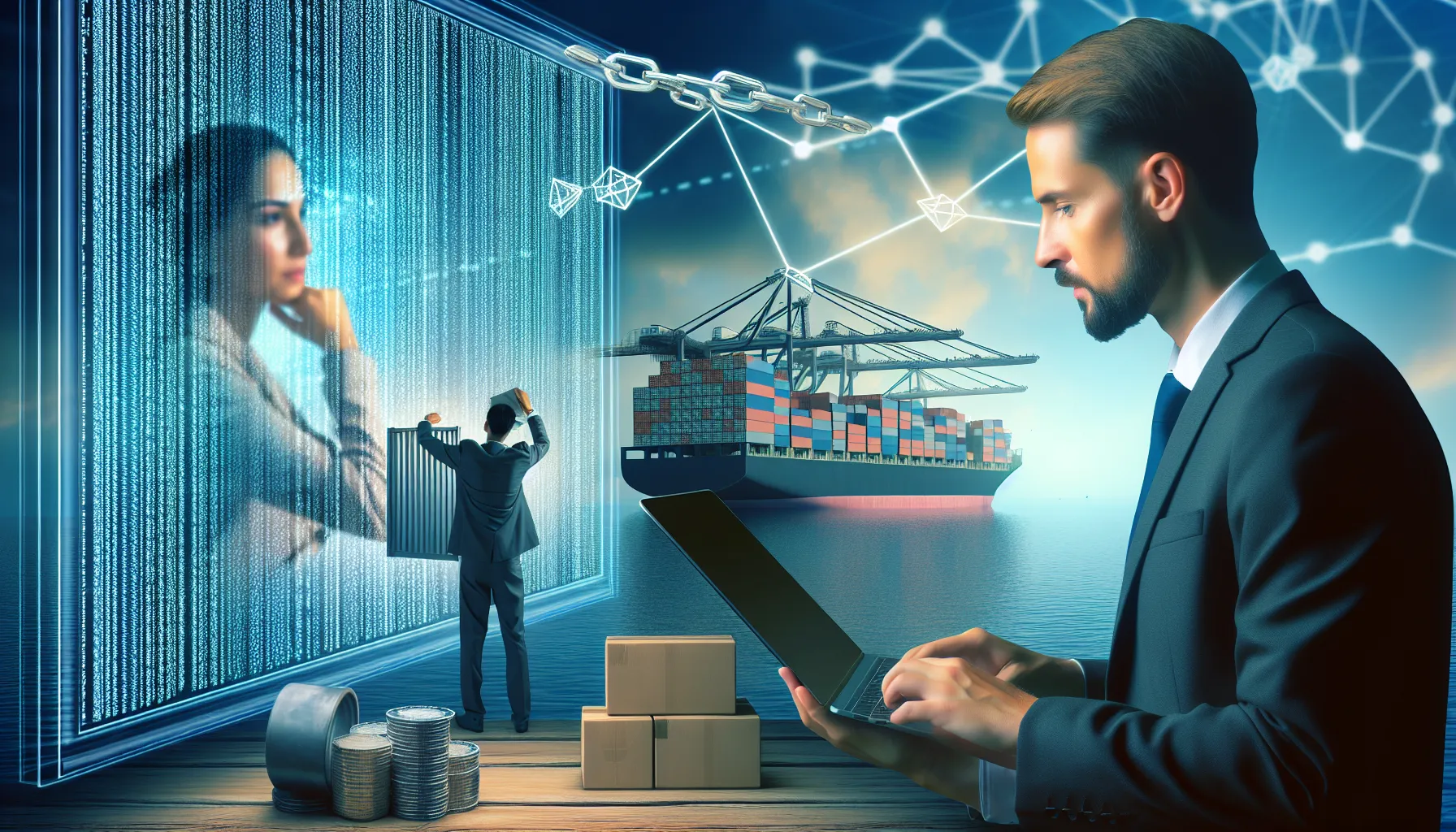In today’s interconnected world, the shipping industry plays a pivotal role in global trade. However, shipping fraud remains a significant challenge, costing businesses billions annually. This is where Blockchain’s role in reducing shipping fraud becomes crucial. Understanding this topic not only enhances your knowledge but also equips you with the vocabulary and comprehension skills needed for the IELTS Reading section.

Sample IELTS Reading Test: Blockchain’s Role in Reducing Shipping Fraud
Passage 1: The Basics of Blockchain Technology (Easy Text)
Blockchain technology, first introduced with Bitcoin in 2008, is a decentralized digital ledger that records transactions across multiple computers. Unlike traditional databases, a blockchain ensures that every transaction is transparent, immutable, and secure. Each block in the chain contains a list of transactions, and once a block is added, it cannot be altered without changing all subsequent blocks, which requires consensus from the network. This feature makes blockchain an attractive solution for industries seeking enhanced security and transparency.
Passage 2: Shipping Industry Challenges and Blockchain Solutions (Medium Text)
The shipping industry faces numerous challenges, including fraud, theft, and paperwork discrepancies. Traditional methods of tracking shipments often rely on centralized databases, which are vulnerable to hacking and manipulation. Blockchain offers a decentralized alternative, where all parties involved in the shipping process—from manufacturers to consumers—can access and verify transactions in real-time. Smart contracts, a feature of blockchain, automatically execute agreements when predefined conditions are met, reducing the risk of human error and fraudulent activities. By implementing blockchain, the shipping industry can ensure the integrity of transactions, track goods more efficiently, and significantly reduce instances of fraud.
Passage 3: Case Studies and Future Implications of Blockchain in Shipping (Hard Text)
Numerous case studies highlight the efficacy of blockchain in mitigating shipping fraud. For instance, Maersk, a global leader in shipping, partnered with IBM to create TradeLens, a blockchain-based platform that enhances transparency and efficiency in global trade. TradeLens allows all stakeholders to access a single, immutable source of truth, reducing paperwork and preventing fraudulent alterations. Another example is the application of blockchain in verifying the authenticity of goods, ensuring that products are not tampered with during transit. Looking ahead, the integration of blockchain with emerging technologies like the Internet of Things (IoT) and artificial intelligence (AI) promises to revolutionize the shipping industry further. These advancements will enable predictive analytics for better decision-making and automated processes that minimize the potential for fraud.
Questions
Passage 1 Questions
-
Multiple Choice
What is one key feature of blockchain technology?
A) Centralized control
B) Immutable records
C) Limited accessibility
D) Temporary data storage -
True/False/Not Given
Blockchain technology was originally created for the shipping industry.- True
- False
- Not Given
-
Short-answer Question
In what year was blockchain technology first introduced?
Passage 2 Questions
-
Matching Information
Match the challenges with their blockchain solutions:
a) Fraud prevention
b) Paperwork discrepancies
c) Thefti) Smart contracts
ii) Decentralized databases
iii) Real-time tracking
-
Yes/No/Not Given
Smart contracts require manual intervention to execute agreements.- Yes
- No
- Not Given
-
Sentence Completion
Blockchain enhances the shipping industry by providing _____ transactions.
Passage 3 Questions
-
Multiple Choice
What is TradeLens?
A) A traditional shipping company
B) A blockchain-based platform
C) An artificial intelligence system
D) An IoT device for tracking shipments -
Matching Headings
Assign the correct heading to the paragraph:- Paragraph A: Discusses the collaboration between Maersk and IBM.
- Paragraph B: Explores future technological integrations with blockchain.
Headings:
i) Case Studies of Blockchain in Shipping
ii) Future Implications of Blockchain -
Short-answer Question
Name one emerging technology that, when integrated with blockchain, can further revolutionize the shipping industry.
Answer Keys
Passage 1 Answers
- Answer: B) Immutable records
- Answer: False
- Answer: 2008
Passage 2 Answers
-
a) Fraud prevention – ii) Decentralized databases
b) Paperwork discrepancies – i) Smart contracts
c) Theft – iii) Real-time tracking -
Answer: No
-
Answer: transparent
Passage 3 Answers
-
Answer: B) A blockchain-based platform
-
- Paragraph A: i) Case Studies of Blockchain in Shipping
- Paragraph B: ii) Future Implications of Blockchain
-
Answer: Internet of Things (IoT) or Artificial Intelligence (AI)
Conclusion
Mastering the IELTS Reading section requires not only a robust vocabulary and strong comprehension skills but also familiarity with a variety of topics. Understanding Blockchain’s role in reducing shipping fraud provides valuable insights into how emerging technologies can transform industries. By practicing with sample passages and questions like those provided, you can enhance your ability to tackle diverse reading materials effectively.
For more practice and expert tips, continue exploring our resources at IELTS.NET – Learning IELTS Online.